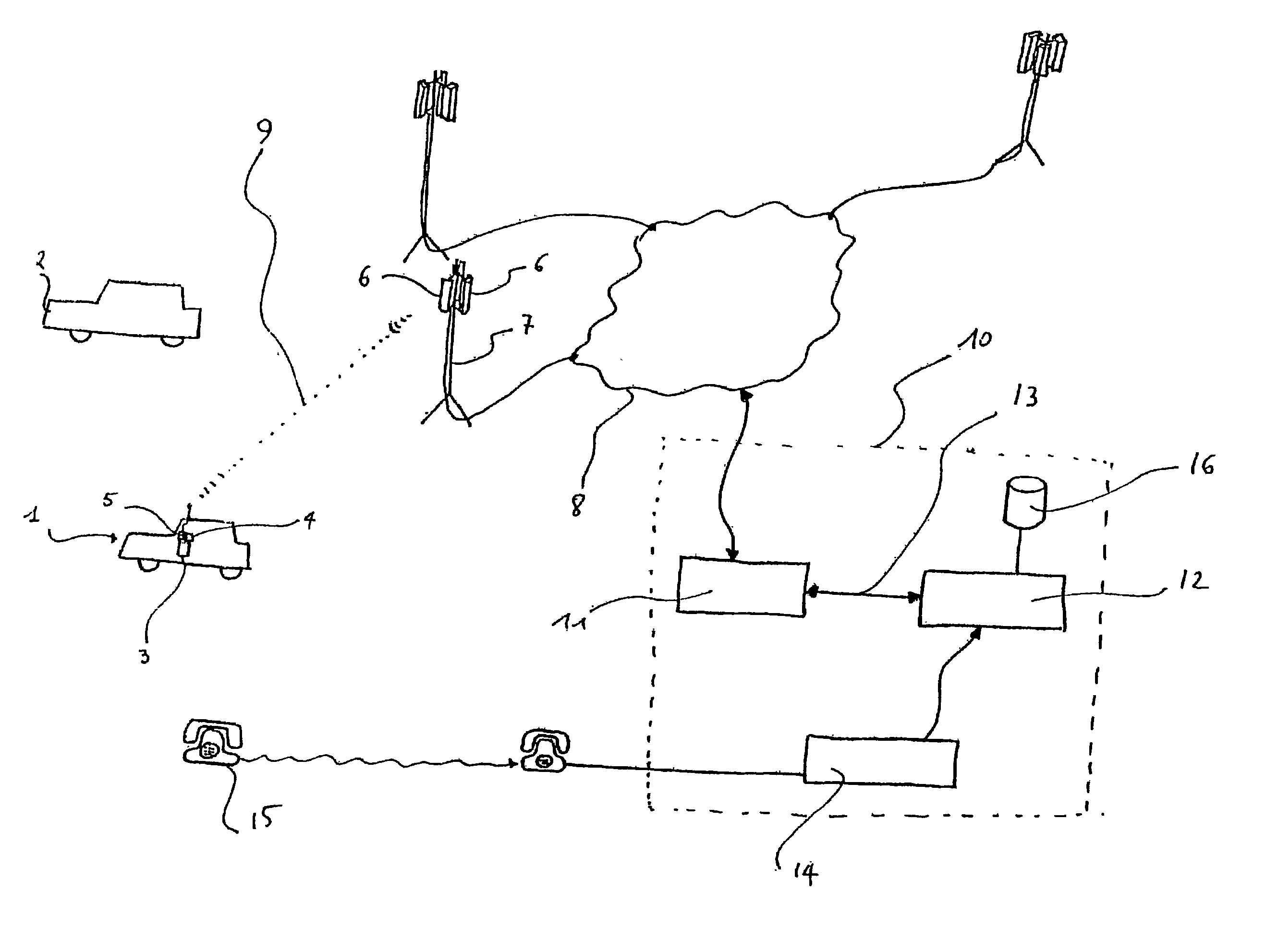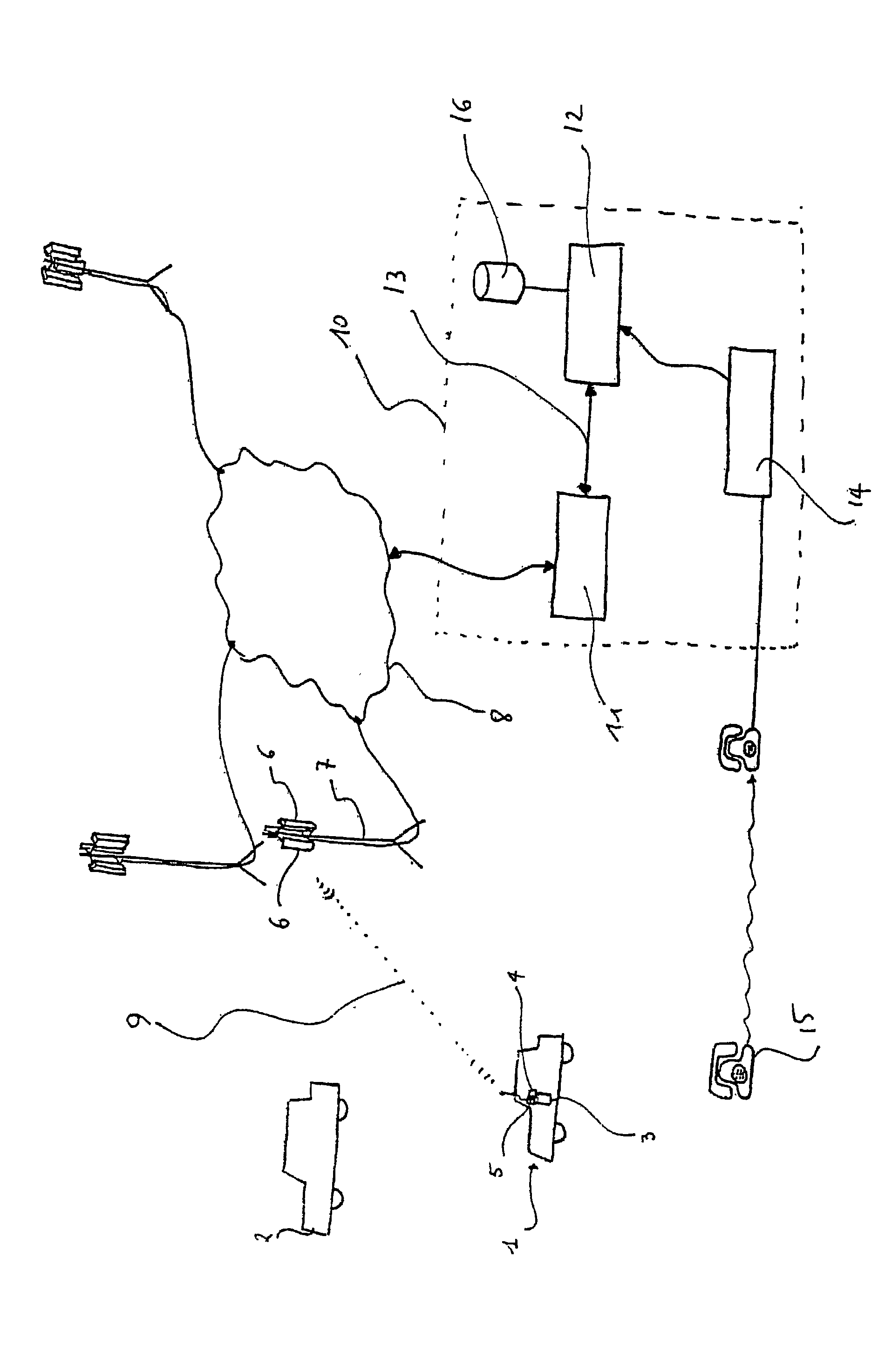Process making it possible to select a taxi from a fleet with a view to allocating it to be undertaken
a technology of a fleet and a selection process, applied in the direction of traffic control systems, road vehicles, instruments, etc., can solve the problems of disturbing the concentration of the driver, affecting the service life of the driver, and causing the customer to be annoyed
- Summary
- Abstract
- Description
- Claims
- Application Information
AI Technical Summary
Benefits of technology
Problems solved by technology
Method used
Image
Examples
Embodiment Construction
[0018] The invention therefore relates to a process making it possible to select a taxi from a fleet of taxis, with a view to allocating it a trip to be undertaken. This selection is made in a known manner as a function of the position of the various taxis of the fleet and of the point of departure of the trip.
[0019] In accordance with the invention, this process is one wherein:
[0020] the taxis are linked to a control center via a network to which the taxis are connected by a cellular radio link;
[0021] the position of each taxi is determined by the control center by virtue of the identifying of at least the last cellular radio link antenna via which the taxi was connected to the network.
[0022] Stated otherwise, it is by way of the system for communicating with the dispatching center that the taxi is located, without the driver having to intervene in this operation. It follows that the possibilities of fraud as mentioned hereinabove are impossible, since the information making it pos...
PUM
 Login to View More
Login to View More Abstract
Description
Claims
Application Information
 Login to View More
Login to View More - R&D
- Intellectual Property
- Life Sciences
- Materials
- Tech Scout
- Unparalleled Data Quality
- Higher Quality Content
- 60% Fewer Hallucinations
Browse by: Latest US Patents, China's latest patents, Technical Efficacy Thesaurus, Application Domain, Technology Topic, Popular Technical Reports.
© 2025 PatSnap. All rights reserved.Legal|Privacy policy|Modern Slavery Act Transparency Statement|Sitemap|About US| Contact US: help@patsnap.com


